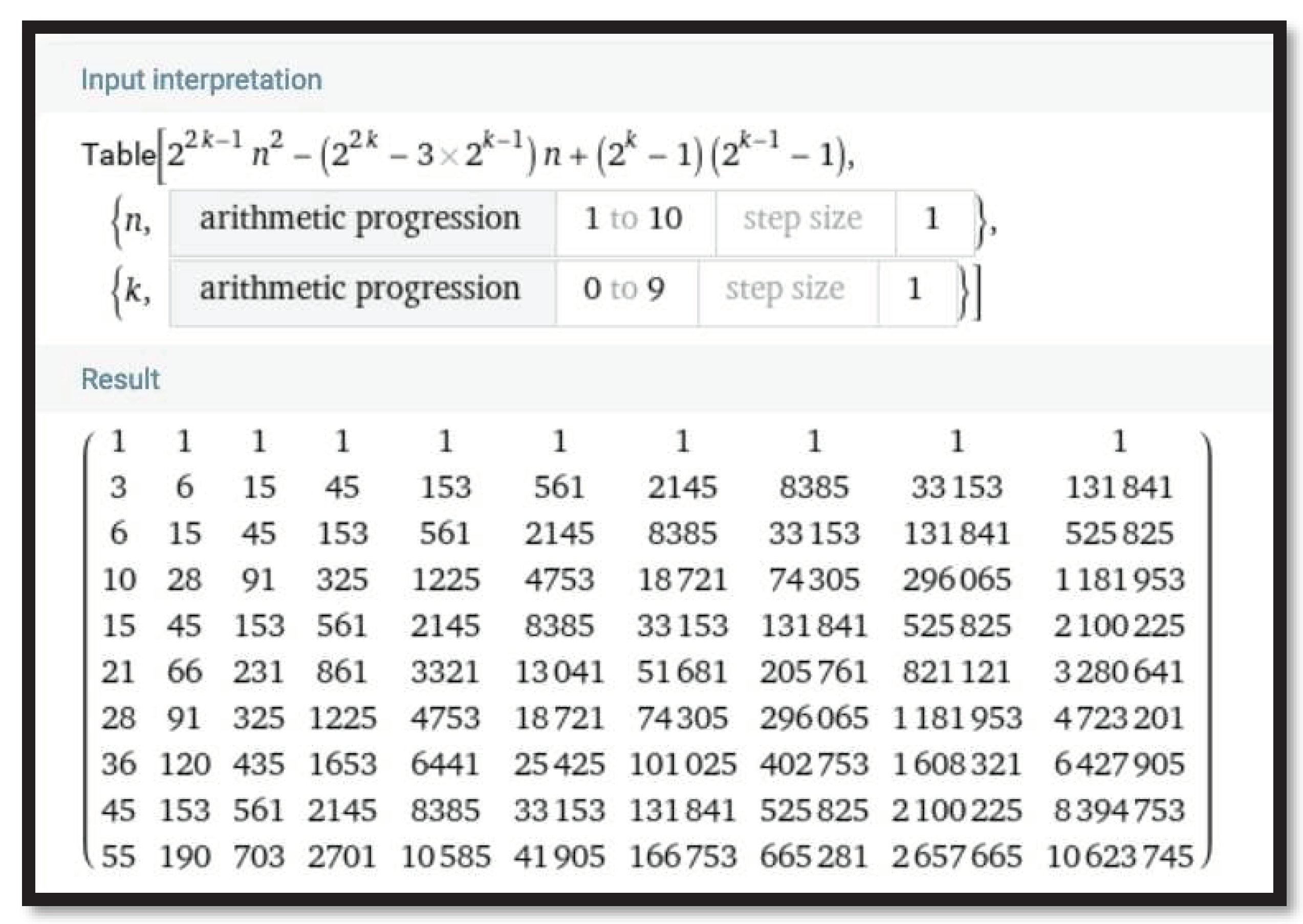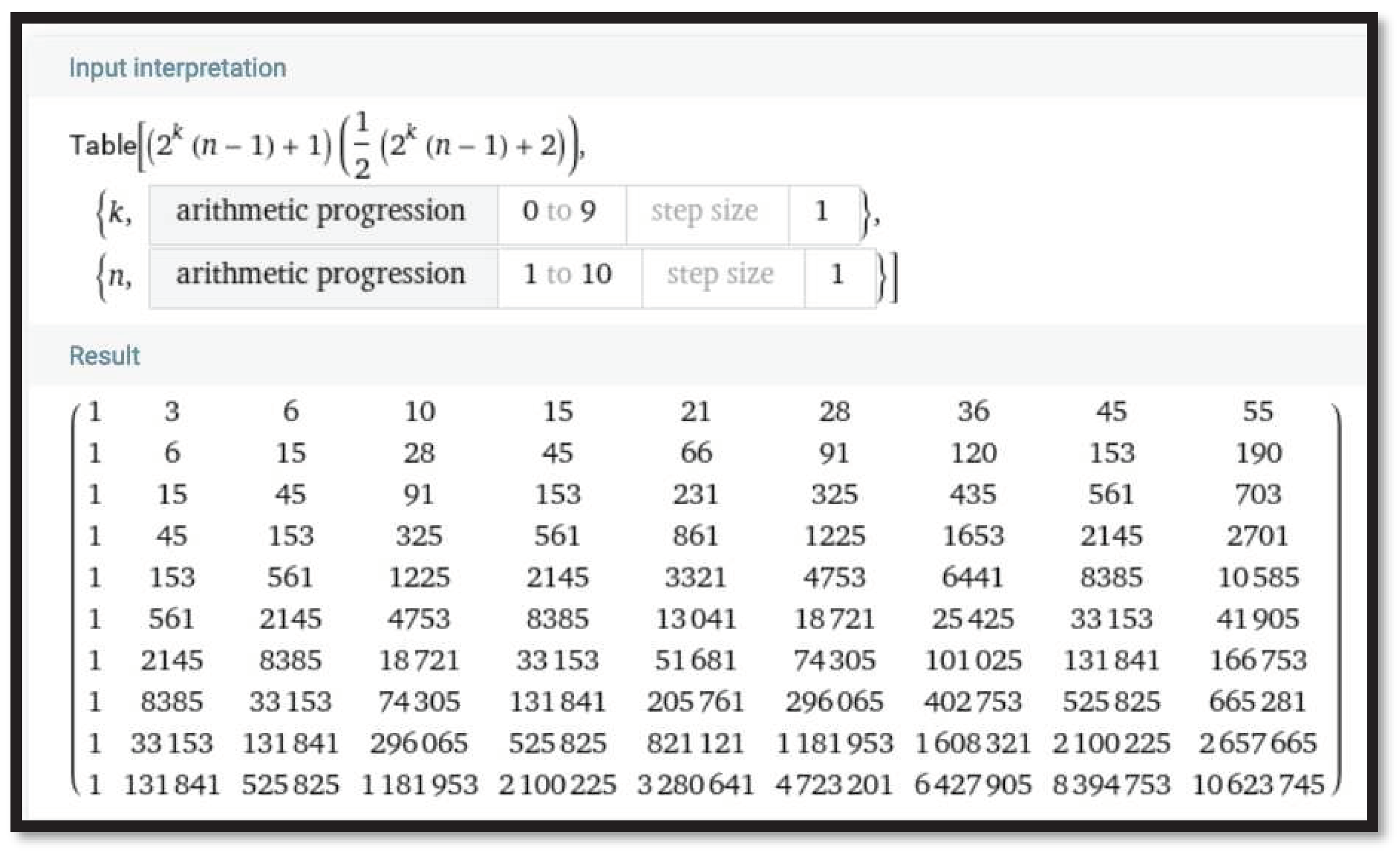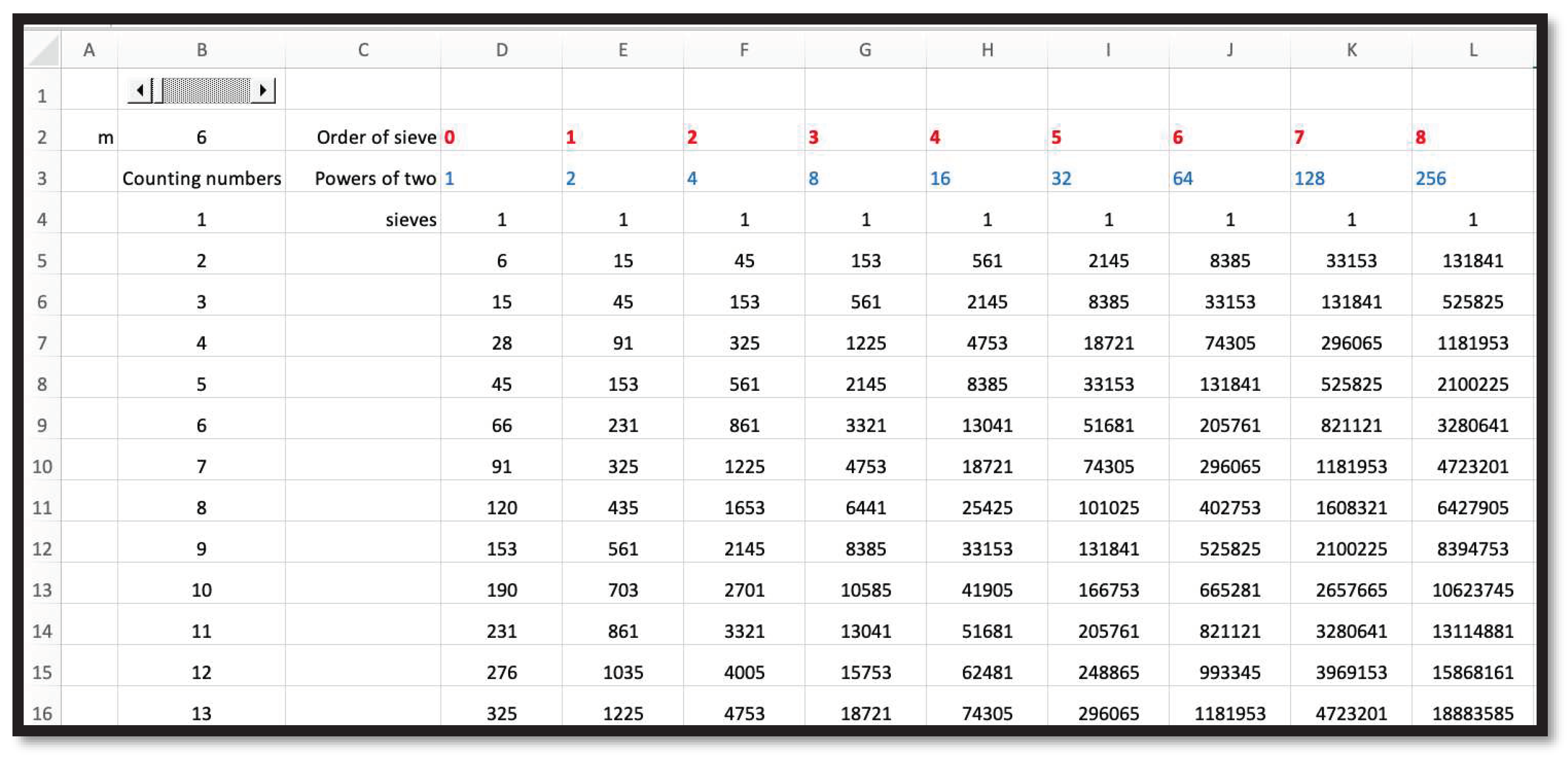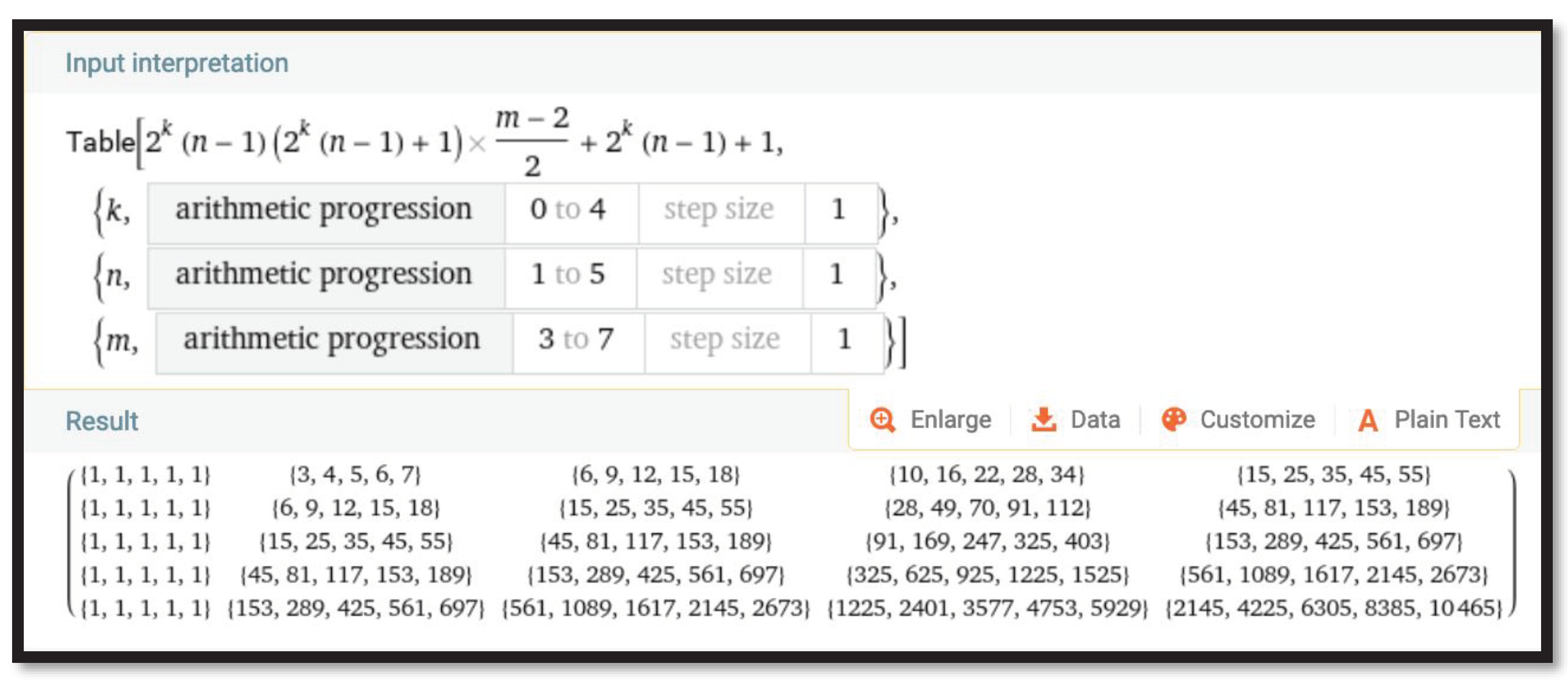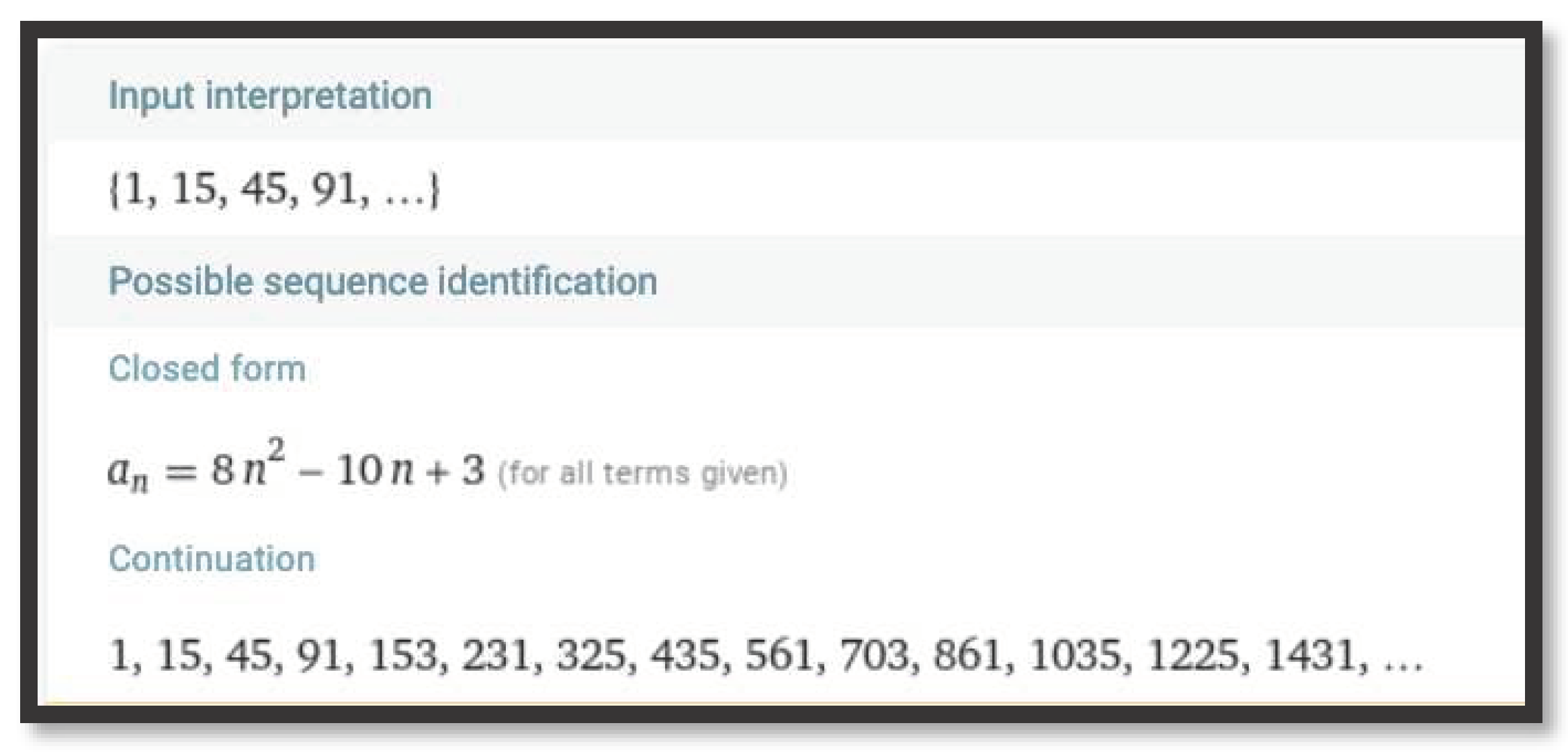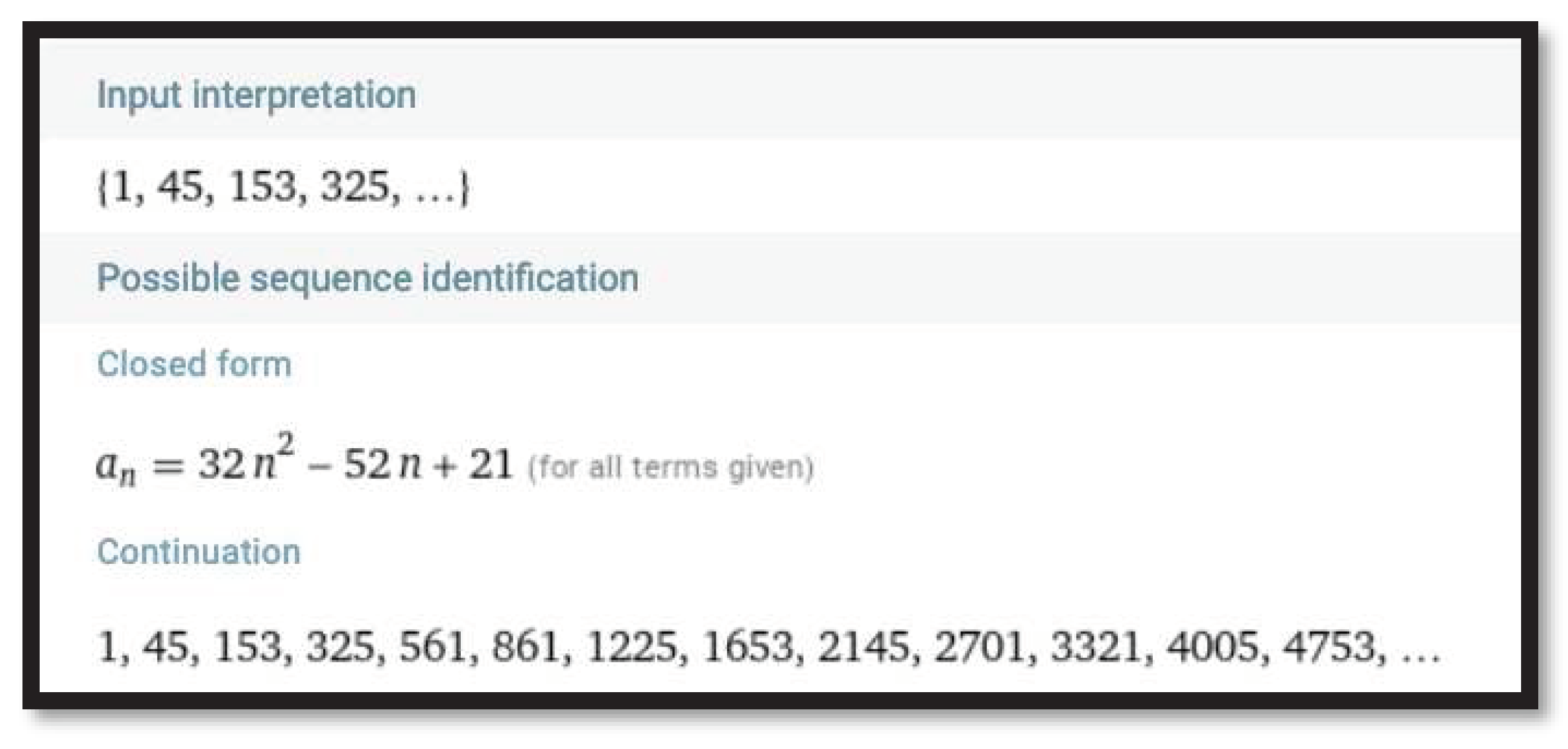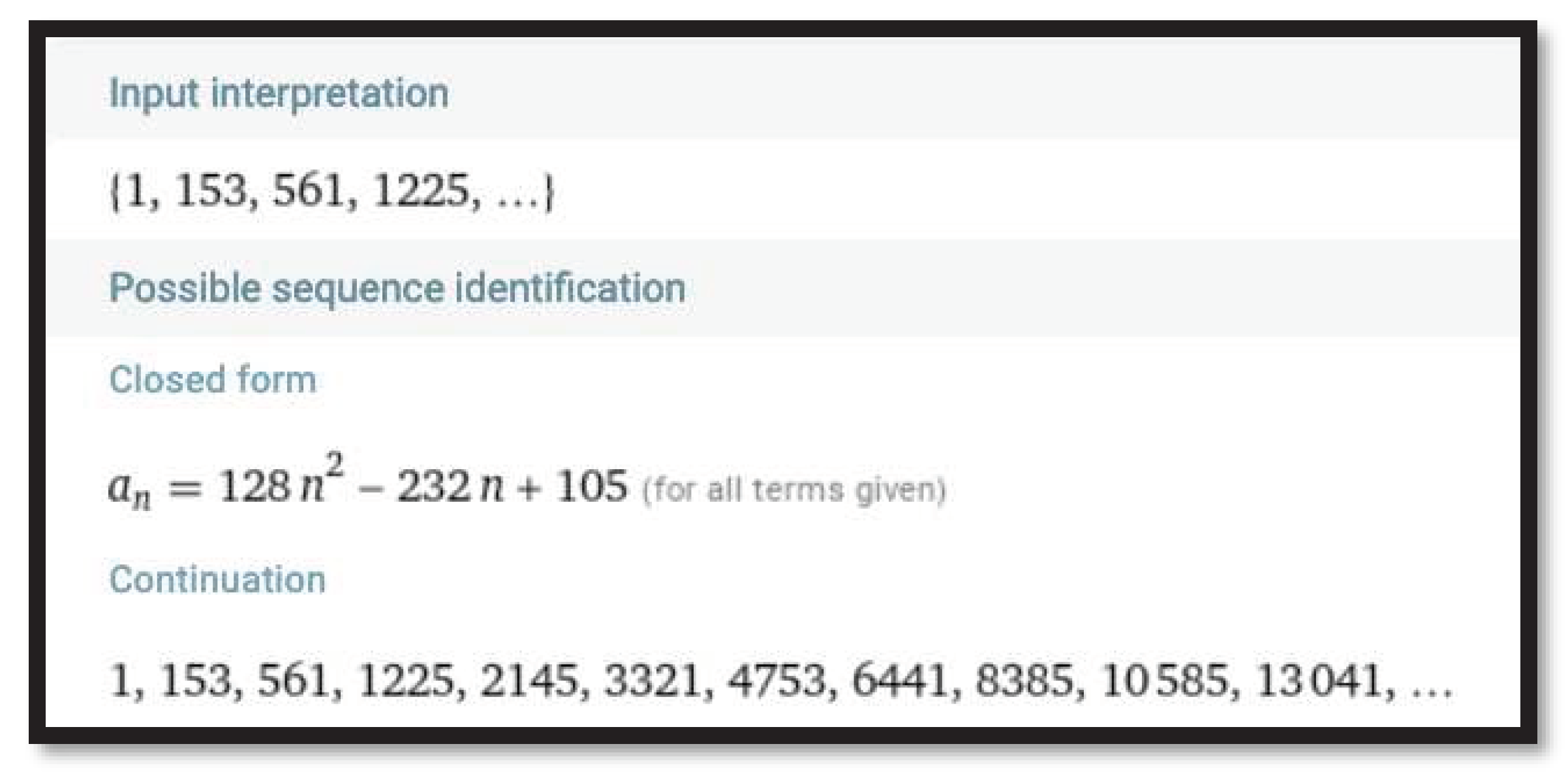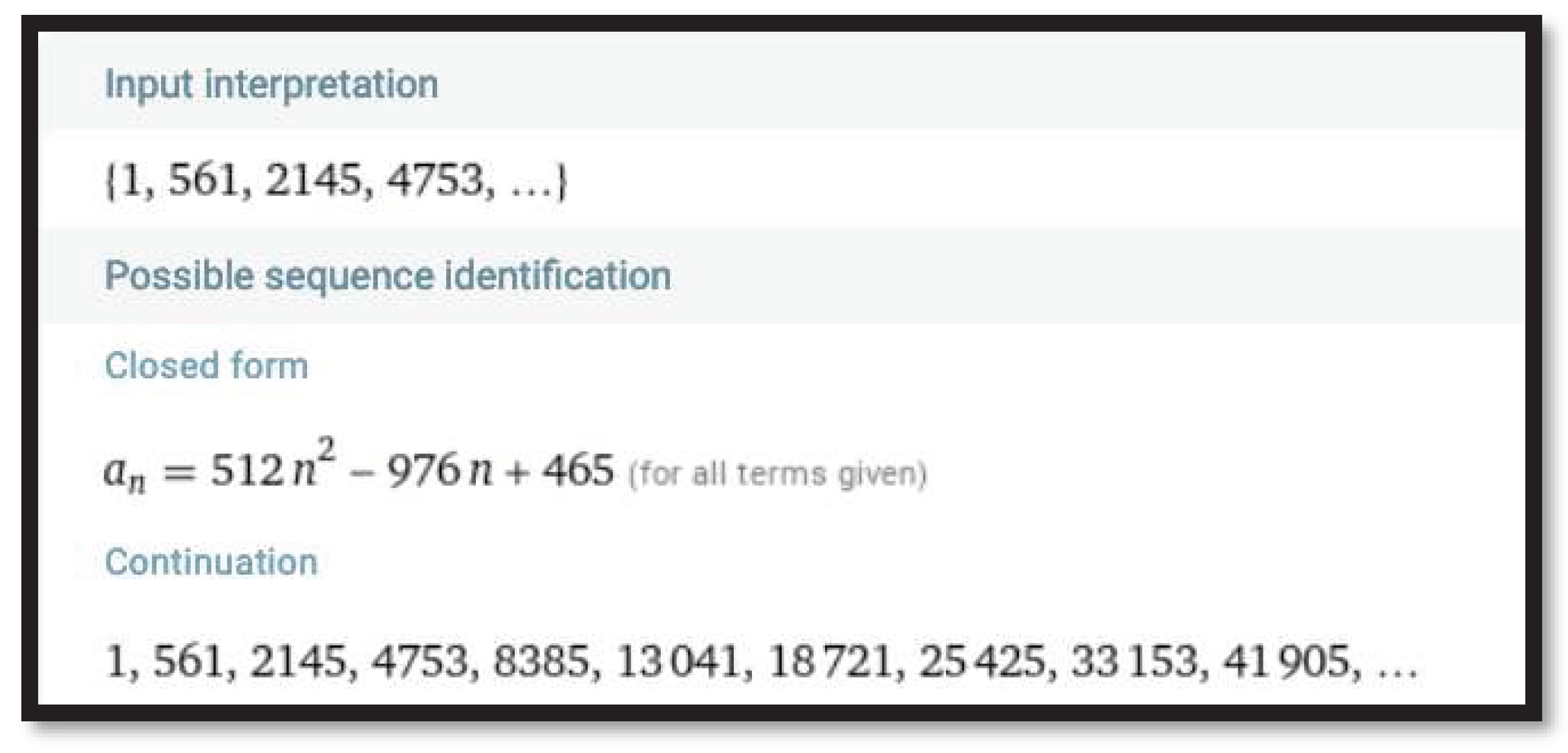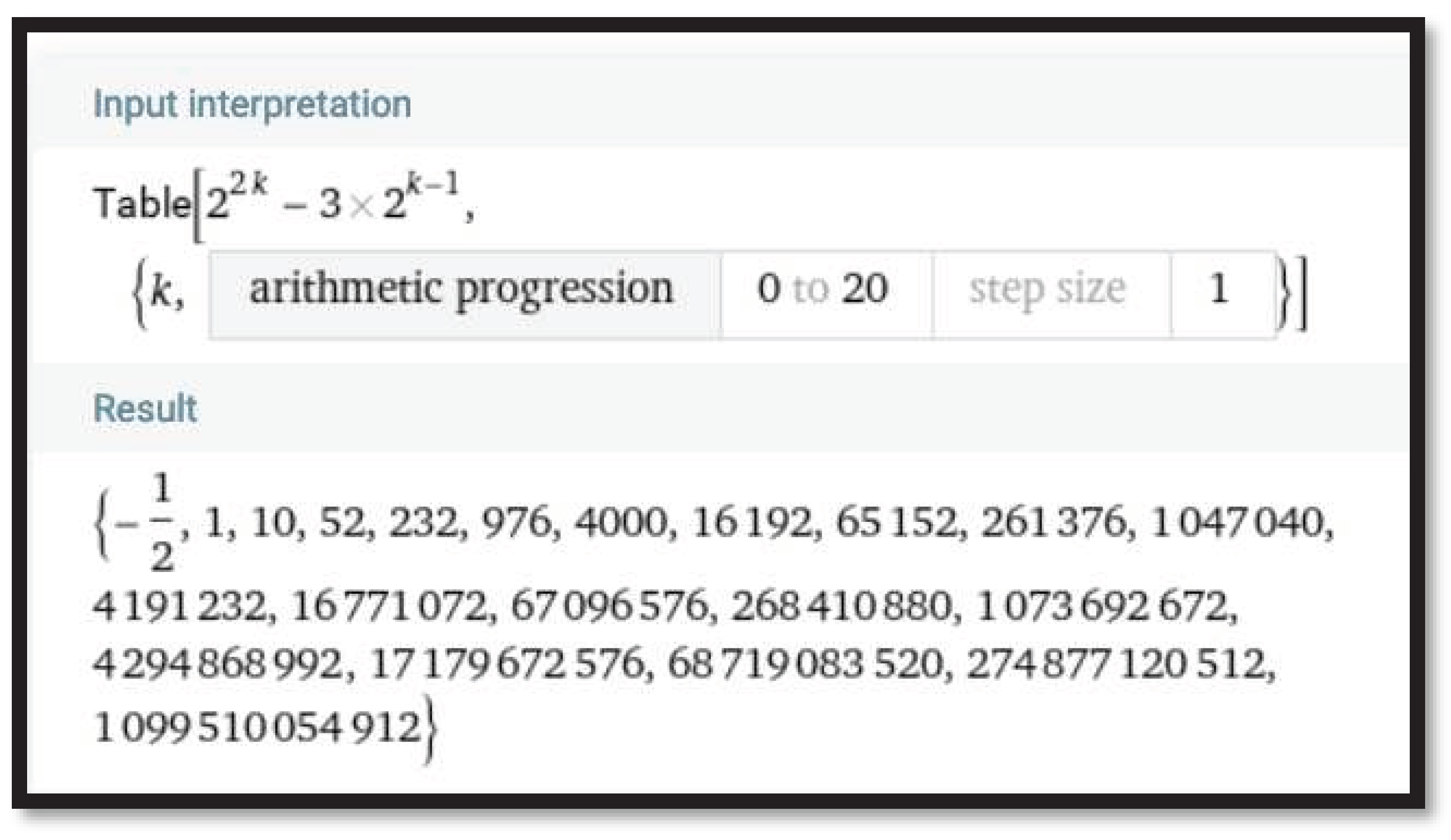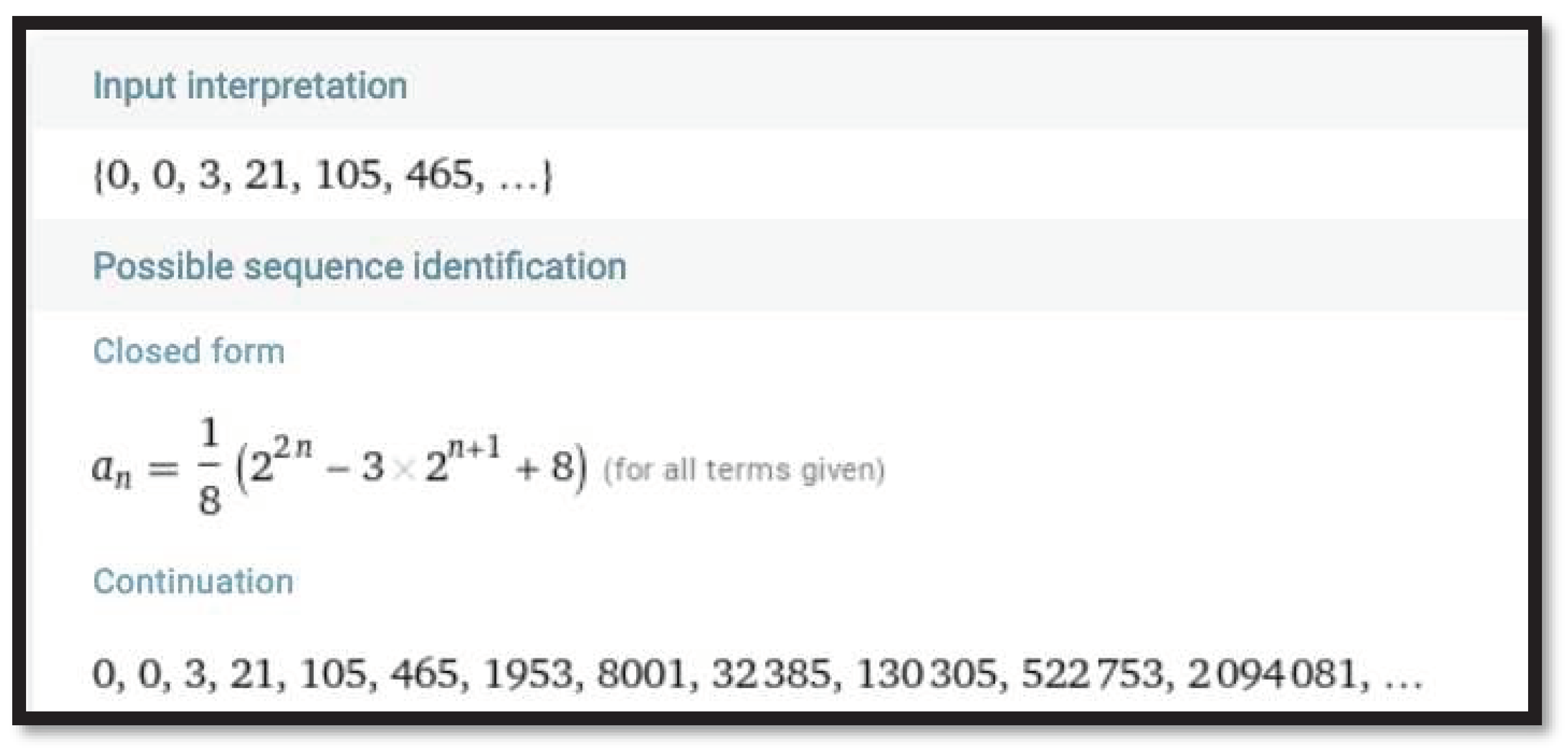1. Introduction
The title of this paper includes several terms that need to be explained as to why they were put together. The term triangulation (with origin in ancient mathematical technique of using triangles when estimating distances) was introduced in the social sciences research in the second part of the 20
th century [
1] toward overcoming the deficiency of rigor in qualitative research grounded in typically subjective interviews. In other words, triangulation allows for looking at the same point from different angles; thereby, making the domain more rigorous. In the age of technology, with the ubiquity of computational thinking [
2] in diverse disciplines, the methodology of triangulation became integrated with advances in digital technology, allowing for scientific experiments to be supported and validated by more than one computational instrument. In particular, the pragmatism of independent computational experiments enhances credibility of quantitative problem solving [
3].
Computational triangulation is a new term [
4] which grew out of the author’s experience using computers with future K-12 teachers of mathematics and interest in learning how social sciences research was enriched by the triangulation approach to sociology [
5]. The use of sophisticated software tools in the modern-day education enables prospective teachers of school mathematics to appreciate intrinsic complexity of various learning management systems that abolishes geographical boundaries of interpersonal collaboration in the rigorous study of school mathematics. Furthermore, computational triangulation of solutions to certain problems used in mathematics teacher education may be seen as a replacement of “the traditional social process of proof” ([
6], p. 1402) to avoid both subtle and unsubtle errors in problem solving in the digital era. Furthermore, Van Bendegem’s [
7] perspective on a mathematical experiment as integration of digital computation and physical manipulation makes it possible, by using concrete materials to enhance the visual component of mathematics education, including the mathematical preparation of schoolteachers.
The term polygonal number is probably best known in mathematics from the conjecture by Pierre de Fermat (1607-1665) that every natural number is a sum of at most
m polygonal numbers of side
m. When
m = 3 we have triangular numbers, known from the time of Pythagoras (570-490 B.C.) as partial sums of consecutive natural numbers [
8]. The term triangular number is familiar to mathematicians from the theorem proved in 1796 by Carl Friedrich Gauss (1777-1855) that any natural number is a sum of at most three triangular numbers [
9]. The general case, known as the polygonal number theorem, was proved by Augustin-Louis Cauchy (1789-1857) some fifteen years later [
10]. In other words, triangular and, in general,
m-gonal numbers form an additive basis of orders three and
m, respectively, for natural numbers [
11]. In mathematics education, triangular numbers connect arithmetic to geometry as such sums can be represented as evolving equilateral triangles representing a special case of the partial sums of arithmetic sequences. In the United States, Principles and Standards for School Mathematics introduce triangular numbers as a context that “illustrates what reasoning and proof can look like in the middle grades” ([
12], p. 264).
Finally, the word sieve is borrowed from the context of prime numbers when in the 3
rd century B.C. the method of separating primes from natural numbers, commonly referred to as the sieve of Eratosthenes, was devised by a Greek scholar Eratosthenes (c.276 B.C-c.195 B.C.) to whom Archimedes (287 B.C-212 B.C.) wrote: “Certain things first became clear to me by a mechanical method, although they had to be demonstrated by geometry afterwards because their investigation by the said mechanical method did not furnish an actual demonstration. But it is of course easier, when the method has previously given us some knowledge of the questions, to supply the proof than it is to find it without any previous knowledge” ([
13], p. 13). Nowadays, what Archimedes called a mechanical method is the use of digital tools which are capable of initiating the interplay between computations and mathematics. This interplay is in the duality of mathematical and computational methods in the sense that whereas computations facilitate access to mathematical knowledge, mathematics itself is used to improve the efficiency of computations, which, in turn, enable advancements in various applications of mathematics, including education, engineering and science. In the modern-day discourse, the reference to geometry by Archimedes as a rigorous demonstration can be substituted by computational triangulation supported by more than one digital instrument capable of symbolic computations and more than one problem-solving approach that structure the algebraic symbolism of computations. In the context of triangular (or, more general, polygonal) numbers the activity of developing sieves of such numbers means crossing out every other term from the original number sequence, then every other term from the so developed subsequence, and so on; thus, arriving on the
k-th step of this elimination process to the sieve of order
k. Other, more complicated types of sieves will be considered also. This paper is written to connect all the concepts described above into a single exploratory milieu for an education-oriented inquiry into the behavior of subsequences of polygonal numbers using the sieve approach.
2. Materials and methods
Two types of materials have been used by the author when working on this paper. The first type included what the National Council of Teachers of Mathematics [
14] called “mathematical action technologies” –computational knowledge engine
Wolfram Alpha developed by Wolfram Research (
www.woframalpha.com; accessed on November 12, 2023),
Maple [
15] – mathematics software for education and STEM fields, and electronic spreadsheet conceptualized by its inventor as a combination of an electronic blackboard and electronic chalk in a classroom [
16]. The tools are called action technologies because their appropriate use enables learners of mathematics to take action by implementing certain computational problem-solving algorithms and, in true spirit of action learning methodology [
17,
18], to reflect on the results. In some cases, such reflection will be supported by the Online Encyclopedia of Integer Sequences (OEIS
®,
https://oeis.org/, accessed on November 12, 2023).
The second type of materials used by the author included teaching and learning mathematics standards [
12,
19] and recommendations for mathematics teacher preparation in the United States [
20,
21]. These materials argue for the appropriate use of technology by the learners and teachers of mathematics, provide expectations for both groups, and offer ideas for mathematics education courses. In full agreement with the above-mentioned documents, methods specific for mathematics education used in this paper include computer-based instruction, standards-based mathematics, and problem solving. In particular, those methods are conducive to enable teacher candidates’ professional development as they “use number-theory to justify relationships involving whole numbers” ([
12], p. 290) and “connect the mathematical practices to mathematical content in mathematics instruction” ([
19], p. 8). Through such development one can provide evidence of how “the proper use of technology make[s] complex ideas tractable” ([
20], p. 57) in the context of secondary mathematics teacher education courses.
Four problem-solving techniques will be implemented in this paper to mathematise computationally inquiries into the sieves of polygonal numbers. The first technique will begin with demonstrating the use of
Wolfram Alpha in making a transition from the first few terms of a number sequence to its possible algebraic identification and numeric continuation. The next step within this technique will be in generating closed-form formulas for numeric sequences in order to have a single formula for the entire family of numeric sequences called the polygonal (in particular, triangular) number sieve of order
k. The process of generalization will be based on the TITE (technology-immune/technology-enabled) framework [
22] which can be briefly described as a combination of computational thinking [
2], the resulting digital computations, and epistemic-oriented interpretation of those pragmatically obtained results.
The second technique to be used in the development of algebraic formulas for polygonal number sieves of order k consists of the study of ranks of polygonal numbers that constitutes the specific sieve. Through this technique, one can develop an alternative form of a second-degree polynomial representing the polygonal number sieve of order k and then use another digital tool – Maple – for proving computationally that different formulas developed for the sieve are identical in the sense that they generate same integers as was delivered by Wolfram Alpha. This computational and analytical triangulation provides rigor for the development of symbolic representations of polygonal number sieves.
The third problem-solving technique is to use a spreadsheet in generating triangular number sieves of different orders and using computational triangulation in verifying the accuracy of symbolic computations provided by Wolfram Alpha and Maple. This technique enables another generalization and the development of a closed-form formula for a polygonal number sieve of order k which includes triangular, square, pentagonal, hexagonal, and other sieves of polygonal numbers.
Finally, the fourth problem-solving technique begins with a mathematical interpretation of numerical modeling of polygonal number sieves that leads to the discovery of a special type of sequence by recourse to OEIS®. This new sequence structures a new polygonal number sieve the terms of which grow fast due to an exponential growth of numbers to be eliminated at each step. Commonalities among new sieves of different sides are explained in the context of the fourth technique through computational triangulation.
3. Triangular number sieves: the first approach
Consider the sequence of triangular numbers
which are the partial sums of consecutive natural numbers 1, 1 + 2 = 3, 1 + 2 + 3 = 6, and so on. It is known that every other triangular number is a hexagonal number
described by the closed-form formula
which, for consistency with notation that follow, can be written as
The sequence of hexagonal numbers can be called the triangular number sieve of order one. Triangular numbers (1) can be called the triangular number sieve of order zero and denoted
In order to develop the triangular number sieve of order two, one has to leave out every other number from sequence (2) to get the sequence
In order to find a closed-form formula for sequence (4), one can enter its first four terms into the input box of
Wolfram Alpha to get (
Figure 1)
Continuation of the sequence defined by formula (5) can be verified over the corresponding sequences generated by
Wolfram Alpha through the second approach (
Figure 8, section 4) and by a spreadsheet through the third approach (
Figure 11, section 5).
In turn, by crossing out every other number from sequence (4), one develops the triangular number sieve of order three
the closed-form formula of which can be generated by
Wolfram Alpha (
Figure 2) in the form
Continuation of the sequence defined by formula (7) can be verified over the corresponding sequences generated by
Wolfram Alpha through the second approach (
Figure 8, section 4) and by a spreadsheet through the third approach (
Figure 11, section 5).
Deleting every other number from sequence (6) yields the triangular number sieve of order four
with the closed-form formula (generated by
Wolfram Alpha as shown in
Figure 3)
Continuation of the sequence defined by formula (9) can be verified over the corresponding sequences generated by
Wolfram Alpha through the second approach (
Figure 8, section 4) and by a spreadsheet through the third approach (
Figure 11, section 5).
Likewise, the formula
can be developed for the triangular number sieve of order five (
Figure 4).
Continuation of the sequence defined by formula (10) can be verified over the corresponding sequences generated by
Wolfram Alpha through the second approach (
Figure 8, section 4) and by a spreadsheet through the third approach (
Figure 11, section 5).
Observing formulas (1), (3), (5), (7), (9) and (10), one can note that the coefficients in
n2 are
The sequence of exponents -1, 1, 3, 5, 7, 9, ... can be written in the form
where
k = 0, 1, 2, 3, ... are the values of the order of a sieve. The sequence of the coefficients in
n1 are 1/2, -1, -10, -52, -976, ... . Using
Wolfram Alpha (
Figure 5), one gets the formula
. The sequence of the coefficients in
n0 are 0, 0, 3, 21, 105, 465, ... . Using
Wolfram Alpha (
Figure 6), one gets the formula
These computations prompt generalization to have a closed-form formula for the triangular number sieve of order
k. Using
Wolfram Alpha (
Figure 8), generalization yields the formula
Remark 1. One can use the OEIS® to get closed-form formulas for triangular number sieves of different orders by entering the first few terms of sequences (5), (7), (9), (10) into the input box of this online source of information. It turns out that sequence (5) is included into OEIS®, yet the tool offers the quadratics rather than defined by relation (6). Note that the former turns into the latter after substituting n – 1 for n. Indeed, . At the same time, whereas triangular number sieves defined by (6), and (7), are parts of the OEIS®, the tool offers their closed-form identical to what is offered by Wolfram Alpha.
Remark 2. One can use
Maple to replace closed-form formula (11) by recursive formula for the triangular number sieve of order
k. This formula and its initial condition are
In particular, when k = 0 we have and when n = k = 0 we have
4. Triangular Number Sieves: The Second Approach
One may wonder: where did exponents with the base two come from? Of course, whereas the elements of the triangular number sieves as triangular numbers are the second powers of their ranks within a sieve, it is due to the coefficients that the growth of the elements of the sieve takes place. Another approach to developing a closed-form formula for the elements of the triangular number sieve of order k is to look for the ranks of triangular numbers which form the sieves of order k, k = 0, 1, 2, 3, ... .
The ranks of the elements of the triangular sieve of order zero, that is, of the sequence of triangular numbers, are 1, 2, 3, 4, 5, ... , that can be defined as
The ranks of the elements of the sieve of order one, that is, the ranks of the triangular numbers 1, 6, 15, 28, 45, ... . are 1, 3, 5, 7, 9, ... , that can be defined as
The ranks of the elements of the sieve of order two, that is, the ranks of the triangular numbers 1, 15, 45, 91, 153, ... . are 1, 5, 9, 13, 17, ... , that can be defined as
The ranks of the elements of the sieve of order three, that is, the ranks of the triangular numbers 1, 45, 153, 325, 561 are 1, 9, 17, 25, 33, and the latter numbers can be defined as
Generalizing from formulas (13) – (16) to the ranks of the elements of the triangular number sieve of order
k yields the sequence of the ranks
Therefore, the
n-th element of the triangular number sieve of order
k has the form
This explains where the powers of two came from and, in addition, provide triangulation for the approach based on the use of Wolfram Alpha resulted in formula (11).
Figure 8.
Triangular number sieves of orders 0, 1, 2, ..., 10 vertically displayed.
Figure 8.
Triangular number sieves of orders 0, 1, 2, ..., 10 vertically displayed.
Figure 9.
Triangular number sieves of orders 0, 1, 2, ..., 10 horizontally displayed.
Figure 9.
Triangular number sieves of orders 0, 1, 2, ..., 10 horizontally displayed.
Figure 10.
Verifying the identicity of (11) and (18) using Maple.
Figure 10.
Verifying the identicity of (11) and (18) using Maple.
5. Triangular number sieves: the third approach
One can also use a spreadsheet to generate triangular number sieves by using formulas describing the ranks of the terms of the sieves developed in the previous section. The general form of the
n-th rank of the term of the sieve of order
k is given by formula (17). This formula can be applied to other polygonal number sieves using formulas that define a polygonal number through its rank. For example, formula (18) defines the
n-th term of the triangular sieve of order
k. The spreadsheet that generates triangular number sieves of orders zero through eight is shown in
Figure 11. The third approach makes it possible to generalize the spreadsheet-based triangular number sieve of order
k to an
m-gonal number sieve of order
k using the formula
representing an
m-gonal number. In that way, the formula
entered in cell D4 and replicated to cell L16 with the value of
m displayed in cell B2 (
Figure 12) makes it possible to have a single spreadsheet that displays
m-gonal number sieves of different orders. In particular, the spreadsheet of
Figure 12 shows hexagonal (
m = 6) number sieves of orders zero through eight. One can check to see that every other triangular number is a hexagonal number.
Formula (19) represents the polygonal number sieve of order
k and side
m which rank is equal to
Using the spreadsheet of
Figure 12, one can generate polygonal number sieves of different orders by changing the value of
m in cell B2. In that way, formula (19) may be considered as a family of two-dimensional formulas depending on
m. At the same time, the use of
Wolfram Alpha makes it possible to use formula (19) as a three-dimensional modeling tool by creating a table of the elements of the corresponding polygonal number sieves for different values of
m. Such table in shown in the bottom part of
Figure 13 generating the first five elements of the five sieves of five order for
In this table, horizontally, the first position in each row contains numbers that belong to the triangular number sieves of orders zero through four. For example, the first element in the second bracket of the fifth row of the
Wolfram Alpha table is 153. This number can be found in cell G4 of the spreadsheet of
Figure 11 – the second element of the triangular number sieve of order four. Likewise, the second, third, fourth and fifth positions in each row contain numbers that belong, respectively, to square, pentagonal, hexagonal, and heptagonal number sieves of orders zero through four. For example, the fourth element in the third bracket of the fifth row of the
Wolfram Alpha table is 2145. This number can be found in cell H6 of the spreadsheet of
Figure 12 – the third element of the hexagonal number sieve of order four. In that way, the joint use of
Wolfram Alpha and a spreadsheet provides computational triangulation in the context of constructing polygonal number sieves of different sides and orders. Furthermore, as will be discussed in the next section, the table developed by
Wolfram Alpha prompts the development of other types of sieves of polygonal numbers.
Figure 11.
Spreadsheet modeling of triangular number sieves of orders 0 through 8.
Figure 11.
Spreadsheet modeling of triangular number sieves of orders 0 through 8.
Figure 12.
Spreadsheet modeling of hexagonal number sieves of orders 0 through 8.
Figure 12.
Spreadsheet modeling of hexagonal number sieves of orders 0 through 8.
Figure 13.
Wolfram Alpha’s use of formula (19) as a three-dimensional model.
Figure 13.
Wolfram Alpha’s use of formula (19) as a three-dimensional model.
6. Exploring Cullen-type polygonal number sieves as a TITE exploration
Explorations begin with interpreting the results of computations in mathematical terms. However, while a TI part of explorations follows the TE part provided by a spreadsheet and
Wolfram Alpha, the former part is not totally independent of technology by seeking information available online and carrying out the very basic computation of products and exponents as a verification of formal reasoning through falling back on the results of digital computations. Consider the numbers 1, 6, 45, 325, 2145, which, according to the table of
Figure 13 represent the 1
st, 2
nd, 3
rd, 4
th, and 5
th elements of triangular number sieves of orders 0, 1, 2, 3, and 4, respectively. In particular, the number 2145 can be found in cell G7 of the spreadsheet of
Figure 11 as the 5
th element of the triangular number sieve of order 4 (alternatively, the 5
th sieve if the sieve of order zero is considered the 1
st sieve). The ranks of the above five numbers are 1, 3, 9, 25, 65, the general form of which,
can be found in OEIS
® (A002064) and referred to as Cullen numbers, named after James Cullen (1867-1933), an Irish mathematician and Jesuit priest. One can check to see that
r(6) = 161 so that the 6
th element of the 6
th triangular number sieve (assigning
n = 1 to the sieve of order zero) is
(see cell H8 in the spreadsheet of
Figure 11). Also,
r(7) = 385 and the 7
th element of the 7
th triangular number sieve is
(see cell I9 in the spreadsheet of
Figure 11). In order to define the sequence of triangular numbers 1, 6, 45, 325, 2145, 13041, 74305, ..., (which can be interpreted as a Cullen-type triangular number sieve), one has to use the formula
For example,
Alternatively, the sequence defined by formula (20) can be described through the following action. To move along the triangular number sieve from 1 to 6 one skips 1 triangular number; to move from 6 to 45 one has to skip 5 triangular numbers; to move from 45 to 325 one has to skip 15 triangular numbers; to move from 325 to 2145 one has to skip 39 triangular numbers; to move from 2145 to 13041 one has to skip 95 triangular numbers, to move from 13041 to 74305 one has to skip 225 triangular numbers. The general form of the sequence 1, 5, 15, 39, 95, 225 is and it can be found in OEIS® under the number A099035. That is, the triangular number sieve 1, 6, 45, 325, 2145, 13041 can be defined as a step-by-step elimination, of triangular numbers, n ≥ 1.
Likewise, one can consider the numbers 1, 15, 153, 1225, 8385, which, according to the table of
Figure 13 represent the 1
st, 2
nd, 3
rd, 4
th, and 5
th elements of hexagonal number sieves of orders 0, 1, 2, 3, and 4, respectively. In particular, the number 8385 can be found in cell H8 of the spreadsheet of
Figure 12 as the 5
th element of the 5
th hexagonal number sieve. The ranks of the above five numbers are also Cullen numbers
Thus, as
r(6) = 161, the 6
th element of the 6
th hexagonal number sieve is
(see cell I9 in the spreadsheet of
Figure 12). In order to define the sequence of hexagonal numbers 1, 15, 153, 1225, 8385, 51681, ... , which can be interpreted as the Cullen-type hexagonal number sieve, one has to use the formula
For example,
(see cell I9 in the spreadsheet of
Figure 12).
Generalizing from formulas (20) and (21), the following formula
where
n ≥ 1,
m ≥ 3, for the Cullen-type polygonal number sieve can be derived.
The table of
Figure 14 created by Wolfram Alpha allows one to write down the first three terms of the Cullen-type number sieves after the second elimination for triangular numbers (1, 45, 2100225), square numbers (1, 81, 4198401), pentagonal numbers (1, 117, 6296577), hexagonal numbers (1, 153, 8394752), and so on. One can check to see that the third element in each of the four triples has rank 2049 on the original list of the corresponding polygonal numbers. For example, the original ranks of triangular and square numbers prior to any elimination are
and
, respectively. Furthermore, those third elements, respectively, have rank nine on the list of the corresponding triangular, square, pentagonal, and hexagonal number sieves of order eight (alternatively, the 9
th sieves counting the sieve of order zero as the 1
st sieve). Likewise, the triangular number 45 and the hexagonal number 153 appear in cells F4 and G5 of the spreadsheets of
Figure 11 and
Figure 12, respectively, both having rank 2 on the lists of the corresponding 4
th sieves (including sieves of order zero). Same is true for the square, 81, and pentagonal, 117, numbers. That is, regardless of the side of polygonal numbers, the Cullen-type elimination process provides the same place within a sieve for the same-rank survivors.
To explain a mathematical meaning of such connections, note that among the first
n natural numbers (
n > 0) there are
even numbers and, because
, there are
numbers that survive elimination of every other number from a polygonal number sieve (whatever its number). In other words, if a polygonal number in a sieve has rank
n, on the next elimination step, when
n = 2
l it has the rank
l, and it has the rank
l + 1 when
n = 2
l + 1. That is, if a number survives elimination, its rank decreases. Therefore, the rank 2049 of a polygonal number on the original list (e.g.,
on the list of triangular numbers) would follow the following transformations before this number appears on the 5
th sieve:
One can also start from the rank 2049 and move up to determine ranks of the polygonal numbers and their corresponding values by increasing by one the double of each rank to get the following chain of ranks:
Using formulas connecting polygonal numbers to their ranks, the corresponding polygonal numbers can be found. For example,
and
These two triangular numbers can be seen in cells L11 and M11 of the spreadsheet of
Figure 11 – they both have rank nine, but belong to the 9
th and the 10
th sieves, respectively.
One can see how computations provide learners of mathematics with numeric evidence for recognizing patterns which require explanations that are independent from the use of technology (i.e., technology-immune). At the same time, when mathematical results are driven by computations (i.e., technology-enabled), formal reasoning may not be entirely detached from computing as reasoning constantly resorts to the results of digital computations for the verification of the absence of possible errors. In other words, computation is the primary instrument used to trigger, amplify, and verify mathematical argument.
7. Conclusion
The paper demonstrated how digital computations in elementary number theory can support educational activities with triangular, hexagonal, and, in general, polygonal numbers. The computations were based on the classic idea, known from the time when Eratosthenes found a way to separate prime numbers from natural numbers, of creating a whole number sieve by eliminating certain integers from the original sequence. The activities, designed for future teachers of secondary mathematics, followed the TITE framework [
22] demonstrating how mathematical explorations may be both dependent on and independent of technology. For example, the construction of quadratic trinomials as analytic representations of triangular number sieves was enabled by
Wolfram Alpha, yet to demonstrate that coefficients in those quadratics are, in fact, base-two exponents of the order (i.e., the step) of elimination required using formal reasoning, pattern recognition, and recourse to online source of information the use of which is free from computation. This was followed by using
Maple in turning a closed-form formula into a recursive formula, thereby providing two forms of representation for a triangular number sieve of order
k. When an alternative analytic closed-form representation of the triangular number sieve of order
k was obtained through a different approach,
Maple was used again to confirm algebraic identicity of two representations, thus enriching activities with computational triangulation [
4].
Furthermore, it was shown how the triangular and the hexagonal number sieves of order k can be generalized to the polygonal number sieve of side m, rank n and order k to be used within a spreadsheet and to allow for the value of m to serve as a slider-controlled parameter on which a family of two-dimensional number sieves depends. By changing the value of m, such a spreadsheet immediately recalculates a large amount of modeling data. The accuracy of spreadsheet modeling was confirmed by Wolfram Alpha which enabled one to tabulate the above-mentioned family of polygonal number sieves for different values of m at once. This made it possible not only to observe the development of polygonal number sieves in three dimensions but to pinpoint identical elements appearing in arrays of different dimensions.
Through a combination of the TITE framework and computational triangulation, another elimination procedure was developed resulting in what was called the Cullen-type polygonal number sieves. In such sieves, the number of integers to be eliminated at a certain step was also a base-two exponent of the step number (a Cullen number). Using the three-dimensional table provided by Wolfram Alpha, the first three elements of the Cullen-type sieves of the second order were identified, located within the corresponding spreadsheets, and connections between two types of modeling were mathematically explained.
A brief history of major developments in the mathematics of polygonal numbers was featured as a way of presenting “mathematics as a living and evolving subject” ([
20], p. 61), an important aspect of any mathematics education course designed for future teachers of secondary mathematics. To this end, the paper prompted that evolution of ideas about the properties of polygonal numbers, on the path from distinguishing them among those used just to count to recognition of their properties in the form of the additive number theory conjectures to formal demonstration of the correctness of the conjectures, was associated with several most famous contributors to mathematics in the history of humankind. The paper showed how the terms triangulation and sieve, associated with classic ideas of mathematics, can be extended, respectively, for using multiple methods in the study of the same phenomenon is social sciences and for novel explorations in mathematics teacher education. All things considered, digital computations allow for ancient and classic mathematical ideas to be revisited in mathematics education through the lens of the modern-day instrumental method which, in general, as Vygotsky [
23] put it, “immensely extends the possibilities of behavior by making the results of the work of geniuses available to everyone”.
